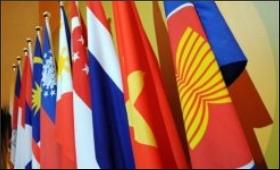|

|
'ASEAN+6 agreement can catapult region's growth'
|
|

|
|
| Top Stories |
 |
|
|
|
SME Times News Bureau | 30 Jan, 2013
The ASEAN+6 Regional Comprehensive Economic Partnership (RCEP) Agreement should transform the region by higher economic growth through more cross-border trade and investment, a minister from Vietnam said in Agra Tuesday.
"The purpose of initiating the ASEAN+6 Regional Comprehensive Economic Partnership (RCEP) Agreement negotiations is to transform the entire region by achieving higher economic growth through more cross-border trade and investment," said Nguyen Cam Tu, vice minister of industry and trade, Vietnam.
Chairing the session, Ajay Shriram, CII vice president, said the importance of RCEP for furthering the objectives of India's Look East Policy - launched in early 1990s - gained strength over the last two decades.
Last month India and ASEAN celebrated the 20th commemorative year of bilateral relations in New Delhi. Shriram further added that RCEP has huge trade potential.
The RCEP negotiations were launched by leaders from ASEAN and ASEAN's free-trade agreements (FTA) partners on the margins of the East Asia Summit in Phnom Penh, Cambodia, in November 2012.
The RCEP aims to be the largest free-trade bloc in the world, comprising all 10 ASEAN nations and six other countries with which the group has FTAs, namely China, India, Japan, South Korea, Australia and New Zealand.
The group includes more than three billion people, has a combined GDP of about $17 trillion, and accounts for about 40 percent of world trade. Negotiations are slated to begin in early 2013 and are expected to conclude by the end of 2015.
The objective of RCEP is to attain a comprehensive and mutually beneficial economic partnership agreement that involves deeper engagement than the existing ASEAN FTAs. Working groups involving ASEAN member states and FTA partners on trade in goods, trade in services, and investment have already been established.
Michael Yeoh, CEO of Asian Strategy and Leadership Institute, Malaysia, is his speech emphasised on the centrality of ASEAN in the proposed RCEP agreement. He said that ASEAN has come a long way and is currently the third most important growth engine after China and India. According to him, RCEP holds the key in successful execution of ASEAN Master Plan on Connectivity, which includes physical, institutional and people-to-people connectivity.
Shigehiro Tanaka, a Japanese official from the ministry of economy, trade and industry, identified three reasons for joining RCEP: integration into the supply chain, cross-border investment and an innovative environment, which will help strengthen the competitiveness of member countries.
|
|
|
| |
|
|
|
|
|
|
|
|
|
|
|
|
|
|
| |
| Customs Exchange Rates |
| Currency |
Import |
Export |
US Dollar
|
₹91.25
|
₹89.55 |
UK Pound
|
₹122.85
|
₹118.85 |
Euro
|
₹107.95
|
₹104.3 |
| Japanese
Yen |
₹59 |
₹57.1 |
| As on 29 Dec, 2025 |
|
|
| Daily Poll |
 |
 |
| What is your biggest hurdle to scaling right now? |
|
|
|
|
|
| Commented Stories |
 |
|
|
|
|
|
| |
|